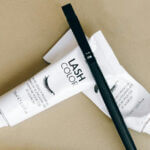
How you wash your beard will determine how good it looks, regardless of its length. Proper cleansing and conditioning prevent irritations, dryness, and flaking, keeping your whiskers smooth, shiny, and soft.
If you’ve been giving your facial hair a quick shampoo with whichever body wash you have at hand during your daily shower, it’s time to stop. Using the wrong products and washing too frequently are the cause of most beard issues.
How Often Should You Wash Your Beard?
Sebaceous glands produce sebum, providing a natural moisturizer and protectant for both the skin and hair. But these are fewer on the face than on the scalp, so your beard may appear dry and gnarled without special care—especially if you keep it long.
To prevent this, don’t wash daily. You’ll otherwise strip away sebum before it’s had time to do its job.
Instead, apply a cleansing agent only once or twice a week. For the rest of the time, rinse with plain water to remove dirt, dust, and sweat.
For mature men, this is particularly important since sebum production slows with age.
Preparing Your Beard Before Washing
Brush Your Beard
Brushing is essential to beard health and hygiene.
I’ve always used a boar bristle brush, whether I’m wearing a full beard or just a mustache. If, for any reason, you’d prefer a non-animal product, try bristles made from sisal.
Brush daily before going under the shower, regardless of whether you’ll be using a cleansing agent or not. Apart from stimulating circulation for healthier growth, it will remove loose hairs and other possible debris.
Exfoliate
Exfoliating sloughs off dead cells and unblocks pores to promote stronger growth and prevent ingrown hairs. It also enables moisturizing products to penetrate the skin more readily. As a result, flakiness—often known as beard dandruff or “beardruff”—is significantly reduced.
Depending on your skin type, both chemical and mechanical exfoliants work well. The latter you can make yourself by combining superfine sugar or baking soda with jojoba or coconut oil.
Exfoliate only once or twice a week prior to applying a cleansing agent, concentrating on the skin beneath your beard.
Hot Oil Treatment for Long Beards
Long beards can appear frizzy, dry, and brittle. As already mentioned, it’s because there’s not enough sebum to coat the entire length.
If you have broken and split ends, get them cut off by a barber. He can trim and shape without leaving your beard shorter than you’d like.
To prevent the issue from recurring, apply oil and styling balm daily, and brush regularly to distribute sebum.
A pre-wash hot oil treatment once or twice a week can reduce moisture loss by protecting your beard from the drying effects of cleansing products. Or apply between shampooing and conditioning: oil penetrates clean hair more efficiently, while conditioner keeps moisture locked in by smoothing the cuticle.
The Most Beneficial Oils for Beards
- Coconut for its hair-strengthening properties. But be careful; it may clog pores and cause breakouts. If you’re acne-prone, apply only to the lengths, keeping it away from your skin.
- Jojoba mimics natural sebum.
- Argan is a so-called dry oil. As such, it absorbs easily and won’t leave a residue.
Try each one to find out which works best for you.
How to Perform a Hot Oil Treatment
The idea is that the warmth should open the hair cuticle in order that the oil can enter the hair shaft.
- Pour the required amount of oil into a heat-resistant bowl or cup and place it into a larger vessel of hot (but not boiling) water to create a hot water bath. After a minute or two, the oil should be warm but not too hot to handle.
- Spread it over your damp beard, distributing to the ends with a wooden comb.
- Leave for 30 to 60 minutes.
- Rinse with warm water.

Choose a Cleansing Agent
What’s Special About Beard Shampoo?
Regular shampoos intended for the head contain substances like sodium lauryl sulfate (SLS) and sodium laureth sulfate (SLES), known simply as “sulfates.” These are cheap but highly efficient cleansers. The trouble is, they may be too efficient for facial hair and skin.
Beard shampoos (or “beard washes,” as they’re also called) use milder alternatives. For example, decyl glucoside is a plant-based cleanser that maintains hydration. Another is cocamidopropyl betaine. Such ingredients produce less lather but are able to remove dirt and product buildup effectively while preserving sufficient sebum to keep the beard and skin hydrated.
Due to high-quality ingredients, beard shampoos are more expensive, but they’re worth it for long beards or if you suffer from itching and dryness.
Most are available with a complementary conditioner.
What Else Can You Use to Wash Your Beard?
Personally, I use a soap-free wash lotion. Like dedicated beard shampoos, it’s sulfate-free and mild enough to cleanse without stripping away sebum. Plus, it’s a lot cheaper.
Instead of conditioner, I seal the cuticle with argan oil while the hair is still damp, combing it through to the ends.
Try both these options if you’re acne-prone or have sensitive skin.
I’m also a fan of a cleansing and conditioning product called Repigmenting Shampoo by Men’s Master. This tones down gray and is suitable for the hair of the head and face.
Although you should avoid shampoos and conditioners intended for the head, I’ve spoken to a number of men who keep flakiness at bay with Head & Shoulders. Occasional use of pine tar soap is another well-known remedy.
It’s a question of experimenting to find what works best for you.

Washing Your Beard
The best place to wash a full beard is in the shower, where you can use a lot of fresh, running water without making a mess.
1. Wet Your Beard
With lukewarm water, make sure your face and beard are completely saturated. This will allow you to distribute your cleansing agent more evenly.
2. Apply Your Cleansing Agent
Apply a small amount of your chosen cleanser to your palms and spread it over and into your beard.
3. Massage
Using your fingertips, massage the cleanser into your skin with circular motions.
For long beards, comb the lengths with your fingers and rub gently.
If using, rinse and apply conditioner.
4. The Final Rinse
It’s absolutely imperative to remove every trace of cleansing agent and conditioner before leaving the shower.
Not doing so will leave residue. This leads to product buildup, which is a cause of frizz, dryness, and irritations.
Drying Your Freshly Washed Beard
Pat your beard with a clean towel; never rub. Apply a lightweight beard oil (or argan oil) while the hair is still damp.
It’s best to air dry, but you can use a hairdryer if you’re in a hurry. Set it at its lowest temperature and maintain a distance of at least six inches. For men prone to frizz, attach a diffuser.
When dry, apply beard balm to tame flyaways and enhance shine; balm is a leave-in conditioner that provides hold.
© 2025 J. Richardson
Related Posts
Disclaimer
The information provided by The Neat and Tidy Man (“we,” “us,” or “our”) on theneatandtidyman.com (the “site”) is for general informational purposes only. While we endeavor to keep the information up to date and correct, we make no representation or warranty of any kind, express or implied, regarding the completeness, accuracy, reliability, suitability, adequacy, validity, or availability of any information on the site. Under no circumstance shall we have any liability to you for any loss or damage of any kind incurred as a result of the use of the site or reliance on any information provided on the site. Your use of the site and your reliance on any information on the site is solely at your own risk.



